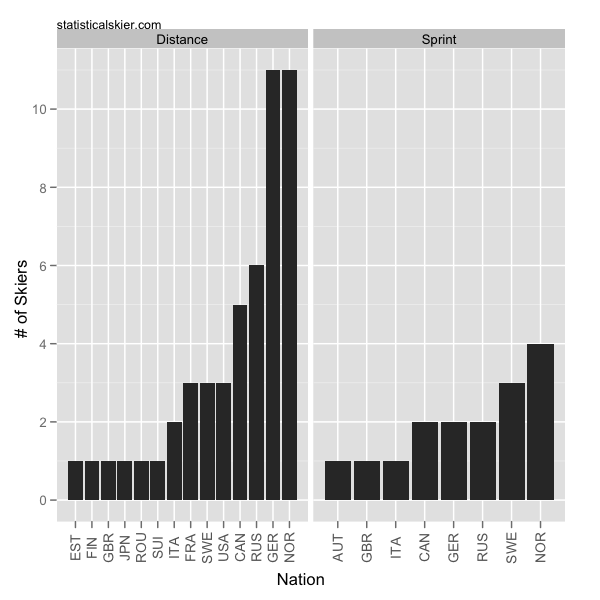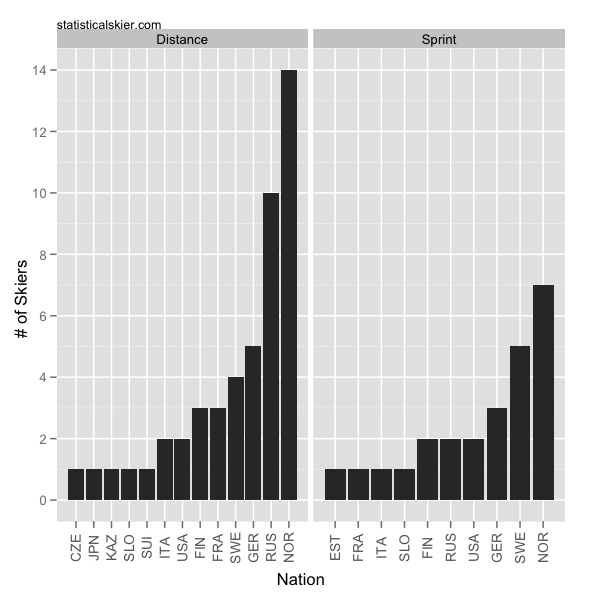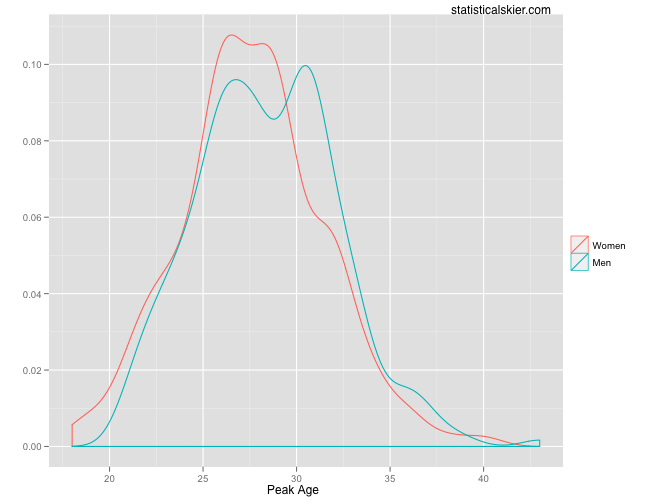Season Openers In Germany
It’s pretty crazy to think about, but the 2011-2012 FIS racing season officially got under way last week with some sprint races in Germany. I don’t know much about the circumstances of the venue, but I’d love to know how they put these races on. I’m guessing artificial snow? Still, they claim to have used a 1.5km course, so they weren’t skimping on the length.
Technically, I suppose the season kicked off earlier in the summer in New Zealand. But this blog has a severe Northern Hemisphere bias.
The field at these races was basically only Germans. My main interest is in how Nicole Fessel did. She had a dramatically improved season last year, so I’m curious how she follows it up this year. So let’s look at how Fessel did in qualification versus some of the top skiers in this race that she’s faced before: Continue reading ›
Tagged nicole fessel, Sprint, women


